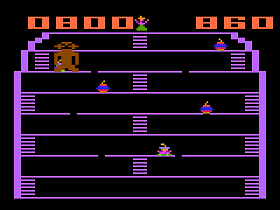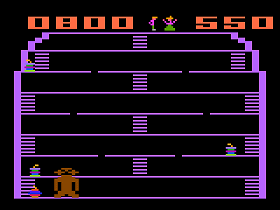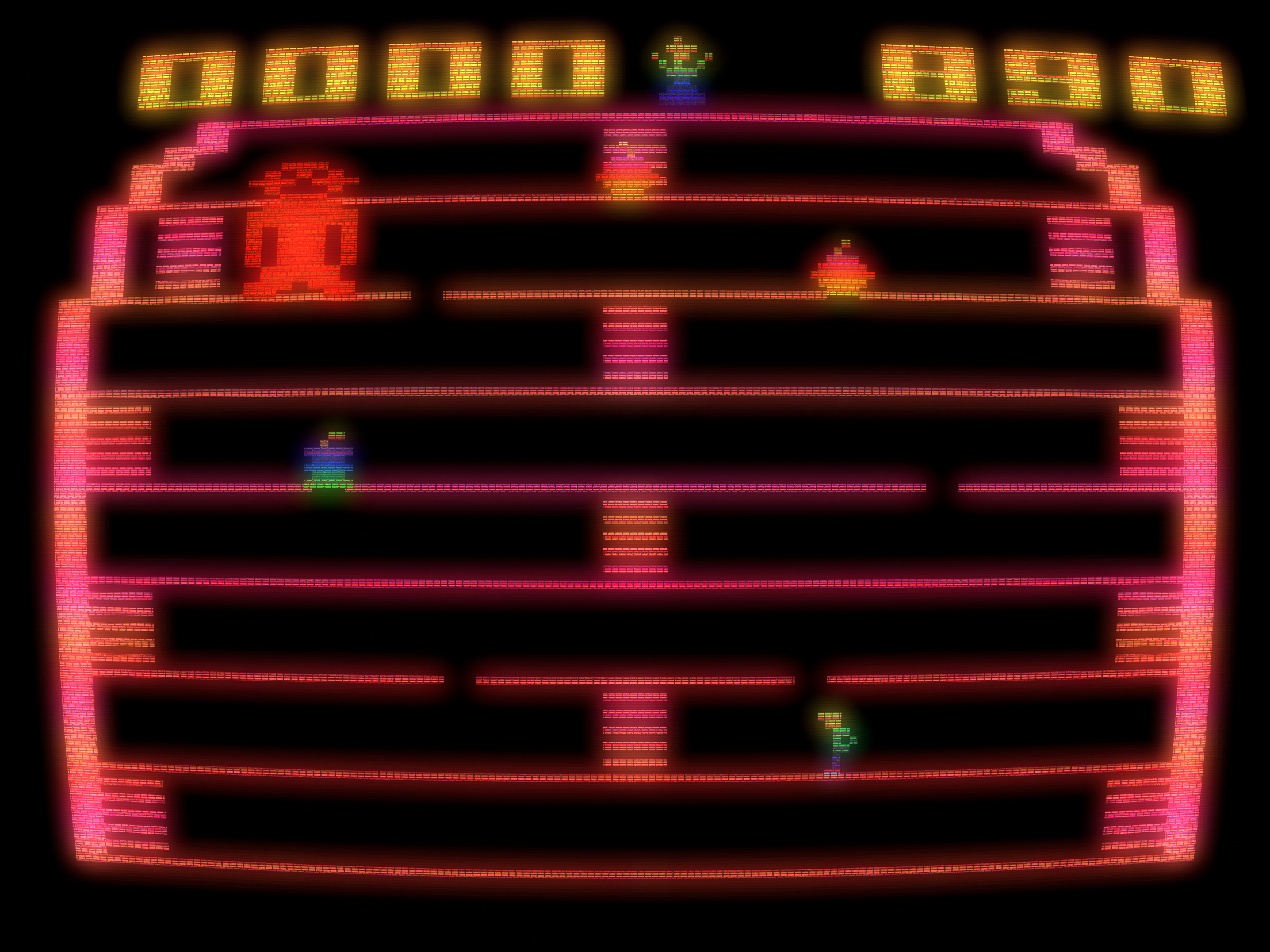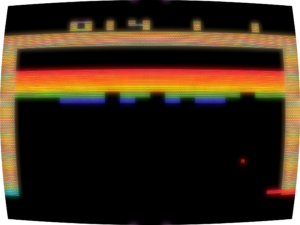 The Game: In a stick-figure firefighter’s greatest adventure, you have to help him reach the top of a perilous scaffolding to rescue a damsel in distress from the dastardly Kong Kong. (Tiger Electronic Toys, 1982)
The Game: In a stick-figure firefighter’s greatest adventure, you have to help him reach the top of a perilous scaffolding to rescue a damsel in distress from the dastardly Kong Kong. (Tiger Electronic Toys, 1982)
Memories: Just when you thought no one could make a worse Atari 2600 Donkey Kong than Coleco could, the electronics division of Tiger Toys comes along and demonstrates that yes, it could have easily been worse. In fact, that this game even made it to the stores after initially being rejected is just a small part of a much more convoluted legal saga.
The designer of the King Kong cartridge obviously patterned the game after Donkey Kong, but a Universal Studios executive named Sid Sheinberg felt that the original arcade Donkey Kong had stepped too far into King Kong’s turf – and of course, Universal had produced the most recent filmed version of King Kong, so of course, naturally, Universal held the rights and could hound Nintendo and its licensees (such as Coleco, makers of the home Donkey Kong cartridges and Ruby-Spears, the makers of the Donkey Kong and Donkey Kong Jr. cartoons) for infringement. Right?
 So they thought, at any rate. In a risky and bold move for a company that had only just established a North American foothold, Nintendo stood its ground even as some of its licensees (including Coleco) caved in to Universal’s demands for licensing fees. Sheinberg had repeatedly threatened that Universal wouldn’t back down, and that even the studio’s lawyers contributed to its profits. As part of the legal battle, Universal had one of its own licensees, Tiger, rush this game onto the market so it could stake a video game claim to King Kong. Nintendo, however, was able to prove in court that the rights to the great ape had been wrested away from a movie studio before – by Universal itself, which managed to have the original King Kong film declared public domain…meaning that RKO Pictures couldn’t sue to stop Universal’s own 1976 remake of the movie.
So they thought, at any rate. In a risky and bold move for a company that had only just established a North American foothold, Nintendo stood its ground even as some of its licensees (including Coleco) caved in to Universal’s demands for licensing fees. Sheinberg had repeatedly threatened that Universal wouldn’t back down, and that even the studio’s lawyers contributed to its profits. As part of the legal battle, Universal had one of its own licensees, Tiger, rush this game onto the market so it could stake a video game claim to King Kong. Nintendo, however, was able to prove in court that the rights to the great ape had been wrested away from a movie studio before – by Universal itself, which managed to have the original King Kong film declared public domain…meaning that RKO Pictures couldn’t sue to stop Universal’s own 1976 remake of the movie.
The fight wasn’t settled until the crash of the American video game industry had struck, so in the end, no one won – except for Nintendo. The consumers who forked over hard-earned cash for this first-ever officially-licensed King Kong video game certainly didn’t win; in a desperate attempt to differentiate it from Donkey Kong, Tiger added some truly bizarre touches, including the “magic bombs,” and Kong’s ability to jump around and suddenly  alter the laws of physics, meaning that the bombs were climbing ladders to pursue the player’s character. It’s almost ironic beyond belief that this uninspired, plodding Donkey Kong wanna-be was rolled out as an example of how Universal Studios was being victimized.
alter the laws of physics, meaning that the bombs were climbing ladders to pursue the player’s character. It’s almost ironic beyond belief that this uninspired, plodding Donkey Kong wanna-be was rolled out as an example of how Universal Studios was being victimized.


